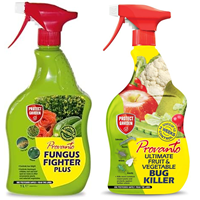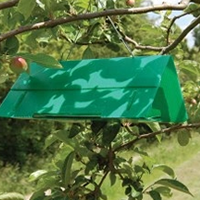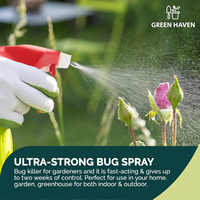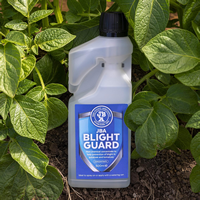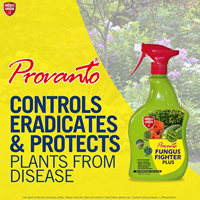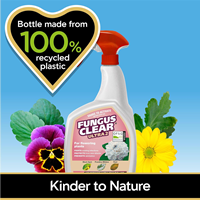Hypoestes phyllostachya - Polka Dot Plant Care
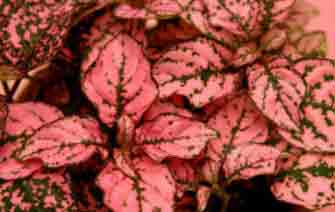
The Polka Dot Plant or Freckle Face is a compact shrubby perennial bearing pointed oval leaves which are awash with coloured speckles - as if paint-splashed with red , pink or cream paint. The natural habitat of Hypoestes is spread from south Africa thrrugh to most SE Asian countries, where is appears in open woodland area.
They have the added advantage of being suitable for use as tall bedding plant or patio container small shrubs. Normal height is an erect 12 - 14in with a similar spread. If used in this manner they can be produced from cuttings and overwintered or started off in early spring.
The flowers are produced later in the year, in spiked racemes some 6in long - clothed in insignificant purplish blooms. Far better removed the flower sike and allow the foliage to develop.
It got its common name from the original species on which the leaves with simply dotted. Nowadays there are many different hybrids ranging from the polka dots though to broad coloured markings on the foliage.
Comprehensive Guide to Indoor Care for Hypoestes phyllostachya - Polka Dot Plant
IntroductionWelcome to our comprehensive guide to indoor care for Hypoestes phyllostachya - Polka Dot Plant! This guide will provide you with all the information you need to keep your Polka Dot Plant healthy and thriving. Hypoestes phyllostachya is a popular houseplant that is known for its bright, colorful foliage and easy care requirements. With the right care, your Polka Dot Plant can bring a splash of color and life to any indoor space. In this guide, we will cover everything you need to know about caring for your Hypoestes phyllostachya - from watering and fertilizing to pruning and repotting. So let's get started!
Planting and Soil Requirements for Hypoestes phyllostachya - Polka Dot Plant
When it comes to planting and soil requirements for Hypoestes phyllostachya - Polka Dot Plant, it is important to ensure that the soil is well-draining and contains plenty of organic matter. The soil should also be slightly acidic, with a pH of 6.0 to 6.5. When planting, it is best to use a potting mix that is specifically designed for indoor plants. This will ensure that the soil is light and airy, allowing for proper drainage and aeration. Additionally, it is important to ensure that the pot is large enough to accommodate the plant's root system. When planting, make sure to leave enough space between the soil and the rim of the pot to allow for adequate drainage. Finally, it is important to water the plant regularly, but not to overwater it. This will help to keep the soil moist and prevent the roots from becoming waterlogged.
Lighting Requirements for Polka Dot Plant
The Hypoestes phyllostachya - Polka Dot Plant is a popular houseplant that is easy to care for and adds a splash of color to any room. When it comes to lighting requirements, the Polka Dot Plant prefers bright, indirect light. It can tolerate some direct sunlight, but too much can cause the leaves to burn. If you don’t have access to bright, indirect light, you can supplement with artificial lighting. Place the plant near a window that receives bright, indirect light for at least 6 hours a day. If you don’t have access to natural light, you can use a combination of fluorescent and LED lights to provide the necessary light for the Polka Dot Plant. Make sure to keep the lights on for at least 12 hours a day to ensure the plant gets enough light.
Watering Schedule for Polka Dot Plant
When it comes to caring for your Hypoestes phyllostachya - Polka Dot Plant, one of the most important aspects is to ensure that you have a consistent watering schedule. This plant is a tropical species, so it needs to be kept moist at all times. During the summer months, you should water your Polka Dot Plant every two to three days. During the winter months, you should water it every four to five days. It is important to note that the soil should be allowed to dry out slightly between waterings. If the soil is too wet, it can cause root rot and other issues. Additionally, you should always use lukewarm water when watering your Polka Dot Plant. This will help to ensure that the plant is getting the best possible care.
Temperature Requirements for Polka Dot Plant
The Hypoestes phyllostachya - Polka Dot Plant is a popular houseplant that is easy to care for and adds a splash of color to any room. It is important to understand the temperature requirements for this plant in order to ensure it thrives in its indoor environment. The ideal temperature range for the Polka Dot Plant is between 65-75°F (18-24°C). If the temperature drops below 60°F (15°C), the plant may become stressed and its growth may be stunted. On the other hand, temperatures above 80°F (27°C) can cause the leaves to become scorched and the plant may suffer from dehydration. It is important to keep the temperature consistent and avoid sudden changes in temperature. Additionally, the Polka Dot Plant should be kept away from cold drafts and direct sunlight. With the right temperature and light conditions, the Polka Dot Plant will thrive and bring a vibrant touch of color to your home.
Pests and Diseases to Watch Out For
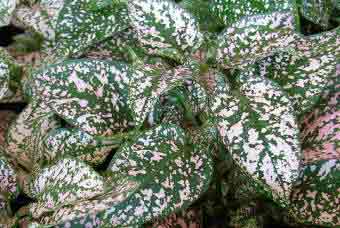
When caring for Hypoestes phyllostachya - Polka Dot Plant, it is important to be aware of the potential pests and diseases that can affect the plant. Common pests include aphids, mealybugs, and spider mites. These pests can be identified by their presence on the leaves and stems of the plant. To prevent infestations, it is important to regularly inspect the plant and remove any pests that are found. Additionally, it is important to ensure that the plant is not overwatered, as this can create an environment that is conducive to pest infestations.
In addition to pests, Hypoestes phyllostachya - Polka Dot Plant is also susceptible to a variety of diseases. Common diseases include powdery mildew, root rot, and leaf spot. These diseases can be identified by their presence on the leaves and stems of the plant. To prevent disease, it is important to ensure that the plant is not overwatered and that the soil is well-draining. Additionally, it is important to ensure that the plant is not exposed to too much direct sunlight, as this can cause the leaves to become scorched.
Comprehensive Guide to Pests and Diseases of the Indoor Hypoestes phyllostachya - Polka Dot Plant
The Polka Dot Plant, scientifically known as Hypoestes phyllostachya, is a popular houseplant with distinctive, colorful foliage. It's loved for its vibrant green leaves speckled with spots of pink, red, or white. Generally, it thrives in bright, indirect light, high humidity, and well-draining soil.
However, like any plant, Polka Dot Plant can become susceptible to pests and diseases under certain conditions. Here are the most common issues and how to manage them:
Common Pests
-
Spider Mites:
These tiny pests are often hard to spot but look for fine webs on the plant. They cause speckling on the leaves and can lead to leaf drop. Control measures include increasing humidity around the plant, washing the plant with a mild soap solution, or using a miticide. -
Aphids:
These small, green or black insects suck sap from the plant, causing curled or yellowed leaves. They can be washed off with water, treated with insecticidal soap, or controlled with natural predators like ladybugs. -
Whiteflies:
These tiny, white insects cause yellowing leaves and stunted growth. They can be controlled by removing infested leaves, using yellow sticky traps, or applying insecticidal soaps.
Common Diseases
-
Root Rot:
Overwatering can lead to this fungal disease. Symptoms include wilting, yellowing leaves, and stunted growth. Prevent root rot by watering only when the top inch of soil is dry and ensuring your pot has good drainage. -
Powdery Mildew:
This appears as a white, powdery coating on leaves. It can be prevented by avoiding overhead watering and ensuring good air circulation. Treat with a fungicide if necessary.
Care Tips for a Healthy Plant
- Light: Provide bright, indirect light. Too little light can result in less vibrant leaf color.
- Watering: Water thoroughly, then allow the top inch of soil to dry before watering again.
- Humidity: This plant enjoys high humidity. Mist regularly or use a pebble tray to increase humidity.
- Fertilizing: Feed with a balanced houseplant fertilizer during the growing season. Follow product instructions for application rates.
In summary, maintaining the health of your indoor Polka Dot Plant involves providing the right growing conditions, regular monitoring for pests and diseases, and timely intervention if issues arise. With these steps, you can enjoy the vibrant beauty of this plant year-round.
Feeding Frequency for Polka Dot Plant
The Hypoestes phyllostachya - Polka Dot Plant is a beautiful and easy-to-care-for houseplant. When it comes to feeding, it is important to remember that this plant does not require a lot of fertilizer. In fact, it is best to feed the plant only once a month during the growing season. During the winter months, it is best to reduce the frequency of feeding to once every two months. When feeding, use a balanced liquid fertilizer diluted to half strength. This will ensure that the plant is getting the nutrients it needs without being over-fertilized.
Tips and Tricks for Common Issues
When it comes to caring for Hypoestes phyllostachya - Polka Dot Plant, there are a few tips and tricks to keep in mind. First, it is important to provide the plant with bright, indirect light. This will help the plant to thrive and keep its vibrant colors. Additionally, it is important to water the plant regularly, but not too much. The soil should be kept moist, but not soggy. If the soil is too wet, it can cause root rot. Lastly, it is important to fertilize the plant every two weeks during the growing season. This will help the plant to stay healthy and vibrant. Following these tips and tricks will help ensure that your Hypoestes phyllostachya - Polka Dot Plant stays healthy and beautiful.
Comprehensive Guide to Propagating Hypoestes phyllostachya - Polka Dot Plant
Hypoestes phyllostachya, also known as the Polka Dot Plant, is a delightful houseplant loved for its vibrant, speckled foliage. Here's how you can propagate your own using stem cuttings, seeds, or division:
Ideal Conditions for PropagationPolka Dot Plant prefers bright, indirect light, high humidity, and well-draining soil. The ideal temperature range for propagation is between 70°F (21°C) and 75°F (24°C). The soil should be kept consistently moist, but not waterlogged. A slightly acidic to neutral pH (6.0-7.0) is best.
-
Stem Cutting Propagation
- Tools required: A sharp, sterilized cutting tool, a pot with drainage holes, a well-draining soil mix, and a clear plastic bag or cover.
- Procedure: Cut a healthy stem about 4-6 inches long, just below a leaf node. Remove the lower leaves and plant the cutting in the pot. Cover the pot with the plastic bag to create a humid environment. Place in bright, indirect light.
- Potential issues: Root rot can occur if the soil is too wet. Ensure the soil is just moist, and remove the plastic cover occasionally to allow air circulation.
-
Seed Sowing
- Tools required: Polka Dot Plant seeds, a seed tray, seed starting mix, and a clear plastic cover.
- Procedure: Fill the seed tray with the seed starting mix and sow the seeds on the surface, lightly pressing them into the mix but not covering them, as they need light to germinate. Cover the tray with the plastic cover and place in a warm, bright location.
- Potential issues: Damping off, a fungal disease, can kill seedlings. Prevent this by avoiding overwatering and ensuring good air circulation.
-
Division
- Tools required: A sharp, sterilized knife, and pots with well-draining soil mix.
- Procedure: Remove the plant from its pot and gently separate the root ball into sections, each with some roots and shoots. Plant each section in its own pot.
- Potential issues: The plant can go into shock after division. Minimize this risk by dividing during the cooler months and keeping the newly potted divisions in a shaded, protected location initially.
Keep the newly propagated plants in a warm, bright location out of direct sunlight. Water regularly to keep the soil moist but not waterlogged. Once the plants are well established, care for them as you would a mature Polka Dot Plant.
Applications for Newly Propagated PlantsPolka Dot Plants make excellent additions to mixed indoor plant containers, can be used as vibrant ground cover in shady outdoor areas, or simply enjoyed as standalone houseplants. Their colorful foliage also makes them great choices for adding pops of color to your home decor.
By following these guidelines, you can successfully propagate and grow your own Polka Dot Plants. Happy gardening!
Conclusion
In conclusion, the Hypoestes phyllostachya - Polka Dot Plant is a beautiful and easy-to-care-for houseplant that can bring a splash of color to any home. With the right amount of light, water, and fertilizer, this plant can thrive indoors and provide years of enjoyment. It is important to remember to keep the soil moist, but not soggy, and to provide adequate drainage. Additionally, it is important to provide the plant with enough light, but not too much direct sunlight. Finally, fertilizing the plant every two weeks during the growing season will help ensure that it stays healthy and vibrant. With the right care, the Hypoestes phyllostachya - Polka Dot Plant can be a beautiful addition to any home.
In conclusion, the Hypoestes phyllostachya - Polka Dot Plant is a beautiful and easy to care for houseplant. With the right soil, lighting, watering, temperature, and feeding requirements, you can ensure that your Polka Dot Plant will thrive. Additionally, it is important to be aware of common pests and diseases that can affect your plant and take the necessary steps to prevent them. With the tips and tricks provided in this guide, you can be confident that your Polka Dot Plant will be healthy and happy for years to come. So, if you're looking for a beautiful and low-maintenance houseplant, the Hypoestes phyllostachya - Polka Dot Plant is the perfect choice.
Frequently Asked Questions
Q1: What is Hypoestes phyllostachya - Polka Dot Plant?
A1: Hypoestes phyllostachya - Polka Dot Plant is a species of flowering plant in the Acanthaceae family. It is native to tropical regions of Africa and Asia and is known for its colorful foliage with spots of pink, white, and red. It is a popular houseplant and is easy to care for.
Q2: What kind of soil should I use for Hypoestes phyllostachya - Polka Dot Plant?
A2: Hypoestes phyllostachya - Polka Dot Plant prefers a well-draining, slightly acidic soil with a pH of 6.0-7.0. It is best to use a potting mix specifically designed for houseplants or a combination of peat moss, perlite, and vermiculite.
Q3: How much light does Hypoestes phyllostachya - Polka Dot Plant need?
A3: Hypoestes phyllostachya - Polka Dot Plant prefers bright, indirect light. It can tolerate some direct sunlight, but too much can cause the leaves to burn.
Q4: How often should I water Hypoestes phyllostachya - Polka Dot Plant?
A4: Hypoestes phyllostachya - Polka Dot Plant should be watered when the top inch of soil is dry. Water thoroughly until the excess water drains out of the bottom of the pot. Allow the soil to dry out between waterings.
Q5: What temperature should I keep Hypoestes phyllostachya - Polka Dot Plant at?
A5: Hypoestes phyllostachya - Polka Dot Plant prefers temperatures between 65-75°F (18-24°C). It can tolerate temperatures as low as 50°F (10°C) but should not be exposed to temperatures below 40°F (4°C).
Q6: What pests and diseases should I watch out for with Hypoestes phyllostachya - Polka Dot Plant?
A6: Hypoestes phyllostachya - Polka Dot Plant is susceptible to common houseplant pests such as aphids, mealybugs, and spider mites. It can also be affected by diseases such as powdery mildew, root rot, and leaf spot. It is important to check your plant regularly for signs of pests or disease and take the necessary steps to prevent them.
By following these tips for Polka Dot Plant care, you can ensure that your beautiful houseplant will remain healthy and vibrant for years to come! Enjoy your Hypoestes phyllostachya - Polka Dot Plant and keep it happy with the care it needs. With the right care, your plant will be a beautiful addition to any home.
Best Selling Gardening Products
Popular Gardening Sections

Problems
Identify Weeds in The Garden - How to deal with weeds. Diseases and Pest which harm your garden and plants, learn how to prevent, deter and erradicate your garden problems.
Garden Problems
Pruning
Pruning Guide. Shrubs flower better with correct pruning. Many illustrations and examples of what to do - and when. Includes evergreens, roses, flowering shrubs, spring flowering shrubs and pruning for stem effect. This is our most viewed and comprehensive section,
Pruning
Gardening Businesses
Gardening Businesses listed in the UK counties and USA states. County and State Listings of businesses involved in Garden supplies and services. If you wish to be added to the Directory, please send us your information. Having problems, use the search box
Businesses
Gardening
In this section you will learn about Gardening Basics, Containers, Landscaping, Propagation and Soil.
Gardening
Gardening Gifts
Gardening Gifts and Reviews, Read Before you Buy
- Gardening Gifts Ideas
- Gifts For Her
- Gifts For Men
- Power Tool Gifts
- Cheap Gifts
- Personalised Gifts
- Wildlife Gifts
- Family Gifts
